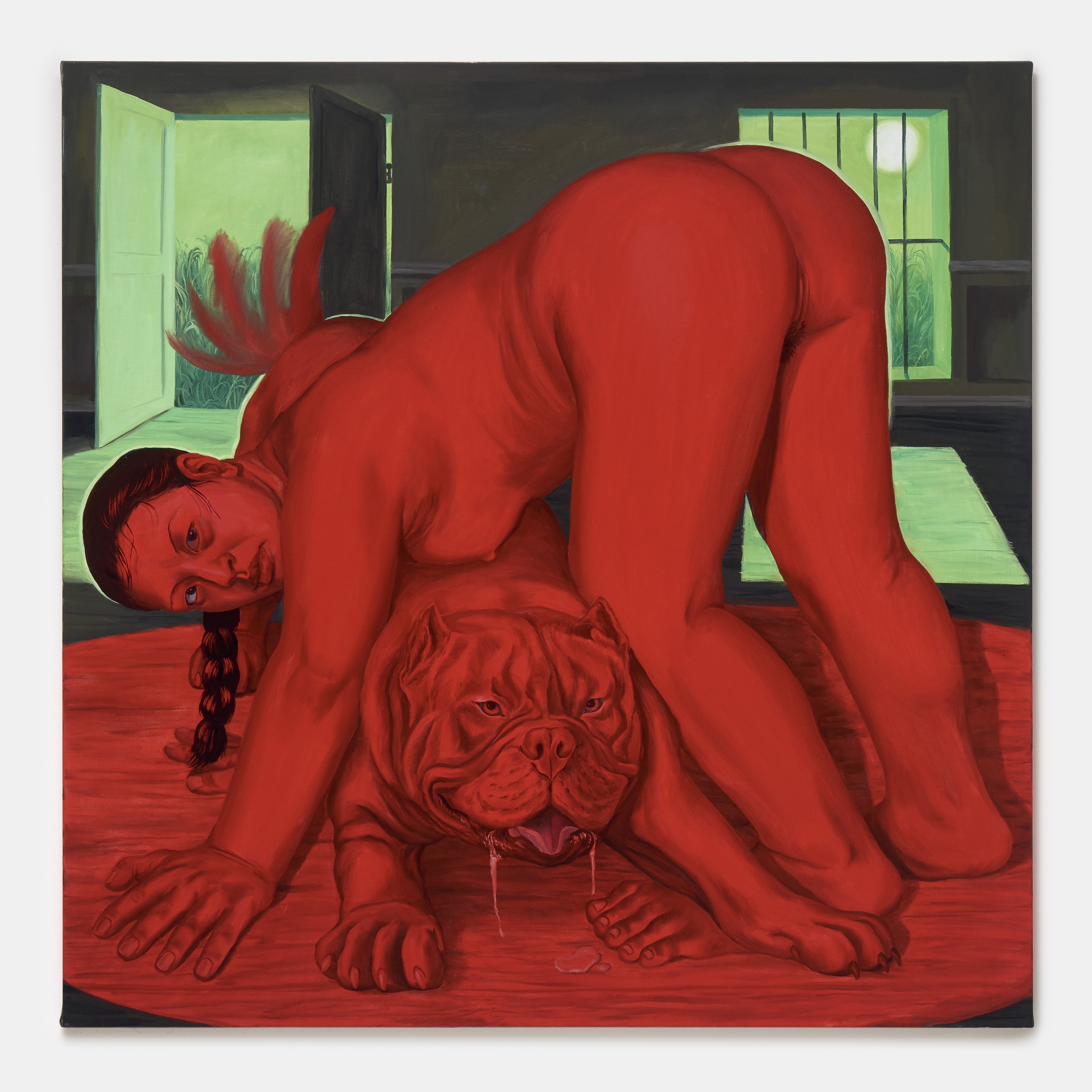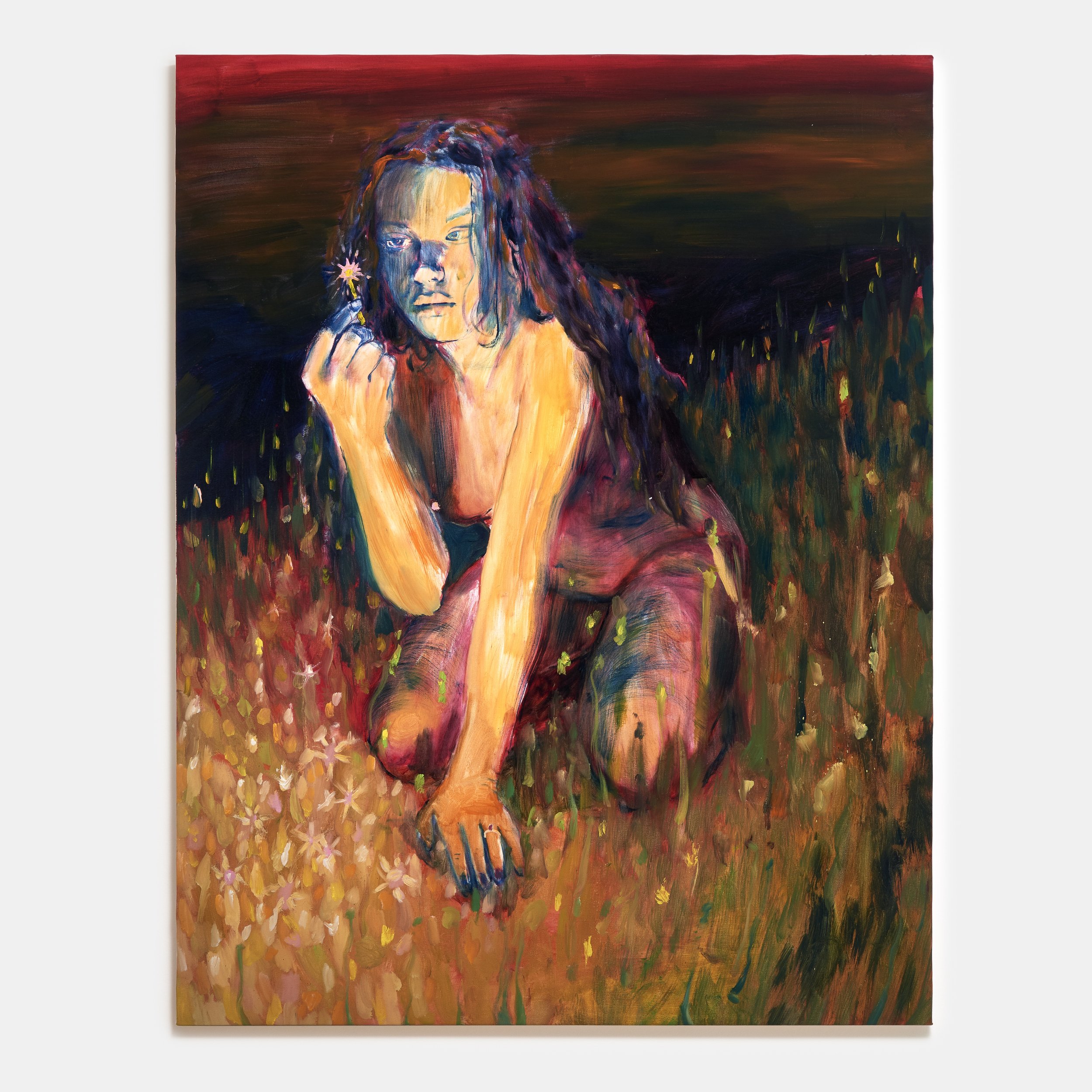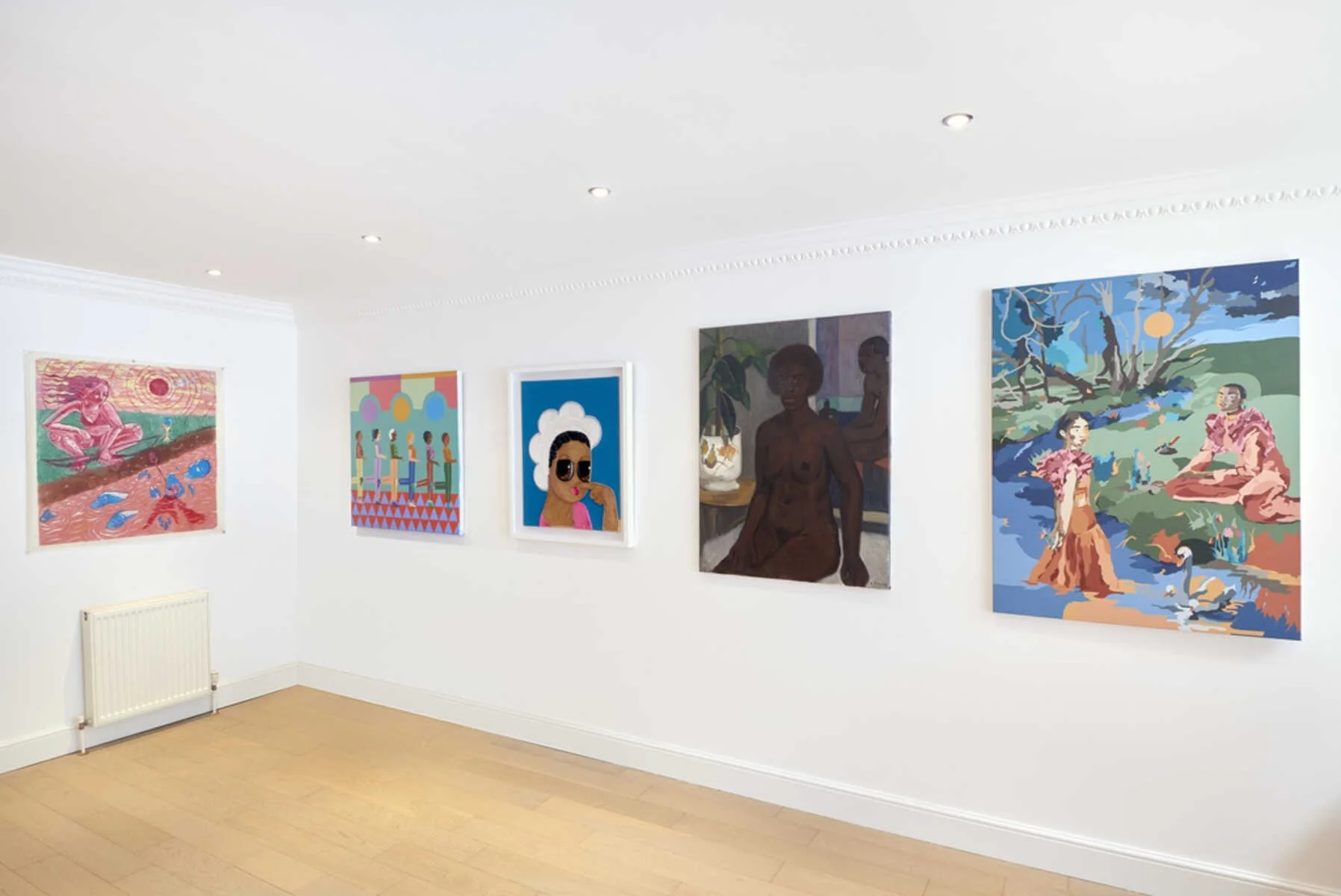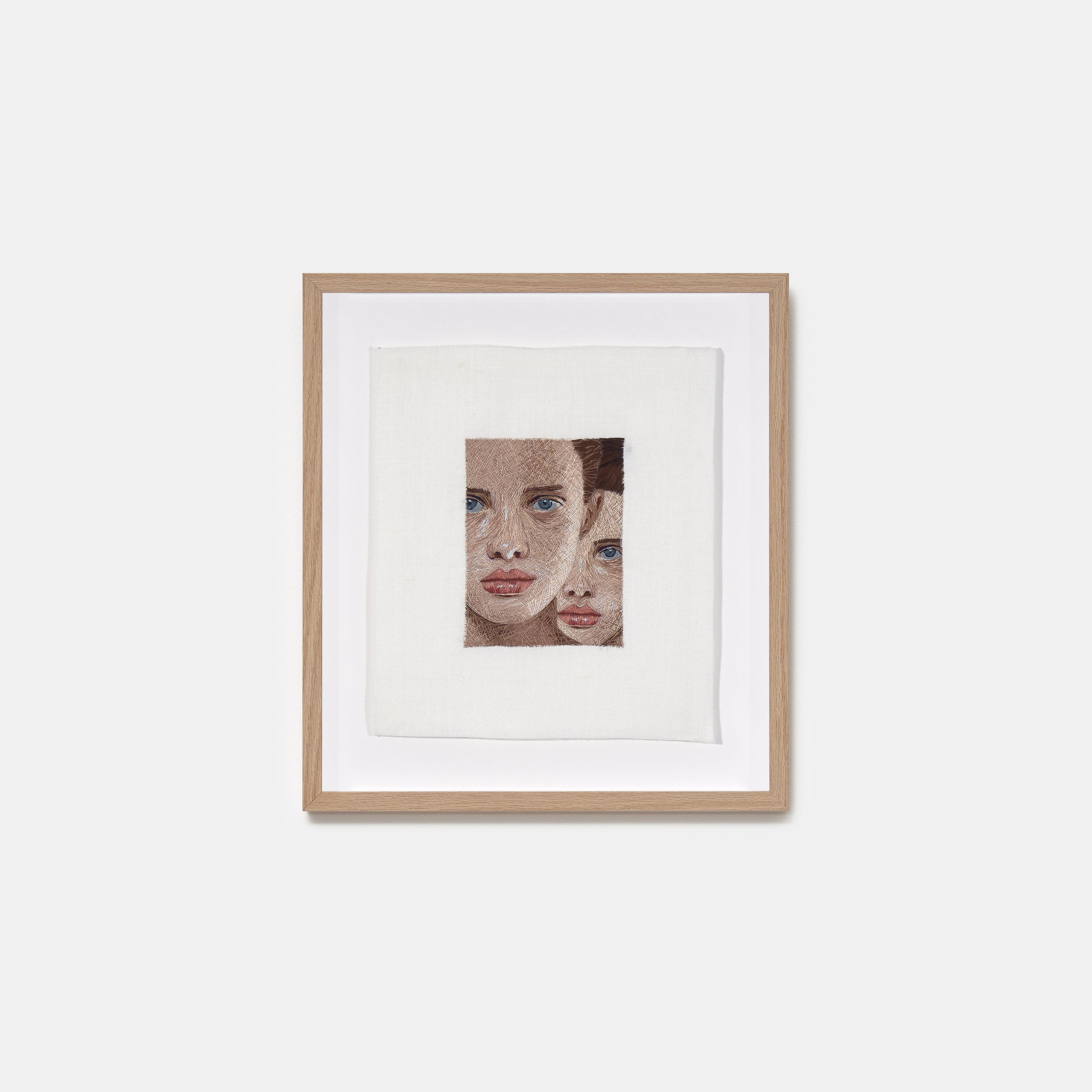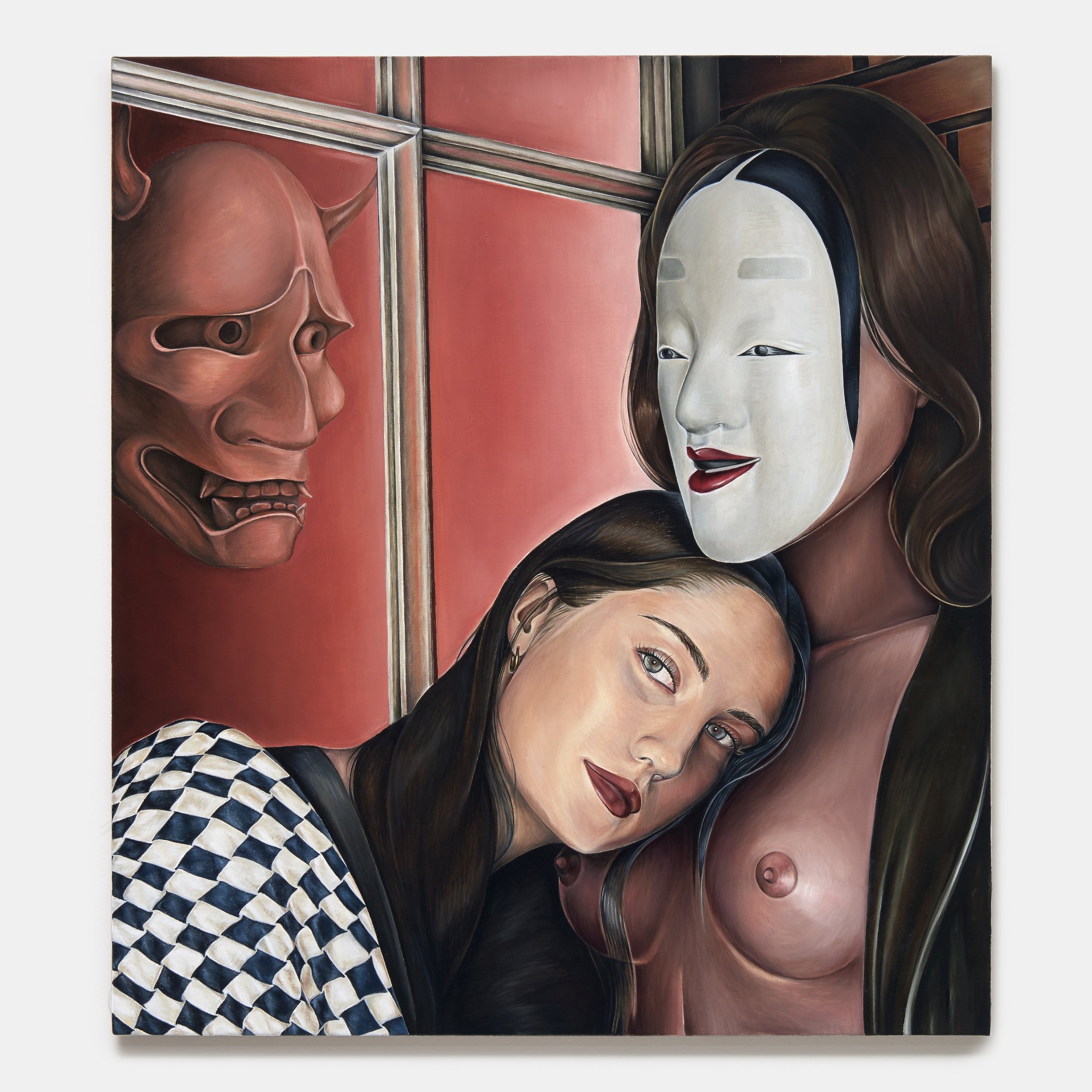Get a Load of This!
Words by Isabella Hill
Having opened at Daniel Raphael, London on May 1st and open until the end of the month, Get a Load of This! has been curated by Mollie E Barnes. Known for her work as an independent curator and her Instagram page, @she_curates_ . Mollie has brought together works by 25 international female and non-binary artists to explore imaginings of the female form. Exploring themes of the male gaze, identity and self-reflection, each work is unique in their vision of the female body, yet all complement each other beautifully within the context of the gallery space.
Amanda Ba, Woman Releasing Dog Fart / The Bitch is Non-sense (2021)
Courtesy of Daniel Raphael Gallery.
What most struck me upon entering the gallery space was how well it suits the exhibition. As a gallery that was originally a house, the mixture of the domestic space with the various depictions of the female form create a sense of intimacy that is not often found in galleries that employ the white cube aesthetic. With natural light pouring into the ground floor room, the images appear brighter and emphasise the ethereal quality of the paintings in this room. Many of these artworks contain an element of surrealism, subverting traditional representations of the female form in a multitude of ways. One artwork that grabbed my attention immediately was Lise Stoufflet’s Pleurer le ciel (2021), depicting a close-up of a woman’s face as she cries tears of the sky. The rich hues of the sky in her eyes in contrast with the subtler pink tones of her skin and hair create a sense of mystery and intrigue as we are unable to identify this crying woman. This work is placed alongside Rebecca Sammon’s work entitled Beach Body Under the Stars (2021), which follows a similar colour palette that presents a female figure bending over and looking directly at the viewer. The vibrancy of the work and the positioning of the figure invites the viewer to stare, as she takes back the sexual agency and power from the viewer through challenging preconceptions of the male gaze. Gone are soft-hued paintings of the female nude, such as in works by Francois Boucher, and are now replaced by bold and opaque colours with women that invite the viewer into the compositional space. Artist Amanda Ba’s work Dog Woman Releasing Dog Fart / The Bitch is Non-sense (2021) portrays a similarly nude figure, bending over. Eroticism is brought to the forefront of the painting in her pose and gaze at the viewer, as the artist subverts the male gaze through such an upfront approach to the sexualisation of the female form. The opposing red and green hues employed by Ba give the effect of a photograph being developed in a dark room, adding to the surrealist nature of the painting. The interplay between the figure and the bulldog serves to remind the viewer that we must revaluate our relationship between species, highlighting the importance of cohabitation and valuing other species just as much as we value ourselves.
Caroline E. Absher, Magic Flowers (2021). Courtesy of Daniel Raphael Gallery.
The larger first-floor room marks a change from the ground floor in its addition of furniture and ornamentation to complement the surrounding artworks. Much of the room’s artworks contain an element of magical realism to them, with figures who could have been plucked straight out of a Gabriel Garcia Marquez novel. In one corner of the room, Loren Erdrich’s Your Face is Bangin’ (2018) is reminiscent of Edvard Munch’s Scream, yet the artist presents a female figure in the middle of a fleeting moment of pain and pleasure in which she lets go of her inhibitions to enter this altered state. Situated beneath this artwork is a classical-style bust of a woman, highlighting the progression of representations of the female form throughout time. Promoting the innocence of the female form, Caroline E. Absher paints Magic Flowers (2021) as a representation of a moment from her childhood. The artificial light coming from the bottom-left corner of the composition focuses on the figure’s upper body and face, as she looks with wonder at a flower she has just picked from the field around her. The combination of bold brushstrokes and complementary colours produce a painting full of wonder and beauty, in which the viewer is transported into this world of childhood innocence that has been long forgotten. While Lily Kemp’s Dreaming in Gold (2021) depicts a moment of innocence as two women relax in a natural landscape, the artist explores the exoticisation of women of colour in the media and the canon of art history. What immediately drew me to this work was its print-like quality due to the flat colours employed by the artist and the crispness of each element’s edges, however, each section of the work has been hand-painted which is an incredibly impressive feat.
Exhibition Installation Shot. Courtesy of Daniel Raphael Gallery.
Kemp’s style is juxtaposed by the traditional academy-style portrait by Sarah Longe titled Just Having a Think (2021). Taking inspiration from classical imagery, such as The Fall of Man, Longe revisits these subjects with black figures as a commentary on the pervasive whiteness of art history. The central figure stares directly at the viewer and I noticed no matter where I was in the room, her eyes still followed my gaze. As a result, the figure seems to cause the viewer to constantly be reminded of this restricted canon. Lastly, I want to mention Alexi Marshall’s linocut print Bloodsport (2021) as its medium and technique stand apart from the other artworks in the room. Its psychedelic colour scheme matched with the modern-looking female figure manages to make a technique popular for printmaking in the early-to-mid twentieth century resonate with today’s audiences. The female figure is reminiscent of the Greek goddess Artemis, the virgin huntress, as she has shot a man through the heart with her bow and arrow. By aligning this figure with the Greek goddess, the artist employs this image as a metaphor for shooting down the male gaze.
Cecile Davidovici, Portraits of a constant dream VII (2021). Courtesy of Daniel Raphael Gallery.
Peppered throughout the corridors are more of the exhibition’s artworks, again, reaffirming the domestic context and drawing the visitor further into the labyrinth of art. While they are all fantastic, my favourite by far is Portraits of a constant dream VII (2021) by French artist Cecile Davidovici. While much smaller in size compared to the exhibition’s other works, its medium separates it as unique from the others. Having been entirely embroidered, this magnificent work built upon layers and layers of thread presents us with one close-up figure that becomes two figures. The ambiguity of both figures is highly intriguing, and while they seem almost identical facially, they are separate individuals who function to act as representations of the inner self. One’s vulnerability is presented in the composition, with the layers of thread acting as brushstrokes on the linen.
The final room at the top of the gallery space offers a change of mood from the other two rooms, presenting much darker themes and colour palettes to portray dualities of the self and resist pressures from society. Alina Zamanova implements body distortion in much of her practice, which is shown once again in her work Dark Side (2020). The female figure within Zamanova’s composition is heavily distorted, with a pixie-like face and tape wrapped around various parts of her body, to emphasise the female form. Much of the artist’s work focuses upon ideas of stereotypes of the ideal female body, which has been heavily influenced by the rise of social media stars who attempt to enhance their figures through plastic surgery and cosmetic fillers, all whilst promoting “loving yourself no matter what you look like”. On the opposite wall lies Ariane Hughes’s work Unfriendly Reflection (2020). The title promotes the exhibition’s theme of identity and creationism in that the viewer and the figure are forced to reevaluate their sense of self. The central woman lays her head on the chest of a masked female figure with exposed breasts, which begs the question of whether or not the relationship is sexual. As a lover of Japanese art and culture, I was intrigued by the use of masks from the Japanese Noh Theatre as they are laden with meaning. The white mask is a Koomte mask, representing innocence and purity. By contrast, the mask in the window is a Hannya mask, a representation of demonic power and suffering in Japanese culture. As such, the painting can be read as a struggle between the innocence of the self and the suffering of womankind.
Ariane Hughes, Unfriendly Reflection (2020). Courtesy of Daniel Raphael Gallery.
Alina Zamanova, Dark Side (2020). Courtesy of Daniel Raphael Gallery.
As for my final thoughts on the exhibition, I just wanted to note that while I have not been able to discuss all the works on display, I can genuinely say they all meaningfully contributed to the exhibition’s themes as a whole. The gallery space invites the visitor in through its intimate feel that is unique to Daniel Raphael, as having been converted from a house. Each room is unified in its subversion of traditional presentations of the female form, whether it be through elements of magical realism, interesting poses or reflections upon the self. As such, the exhibition sheds light on the pervasiveness of the male gaze in the 21st century, yet it gives me hope for this new generation of artists who can aid women in reclaiming their power.
Get a Load of This! is on display at Daniel Raphael Gallery until May 31 2021.
By appointment only.
Explore the exhibition on Artsy.
Find out more at Daniel Raphael Gallery.


